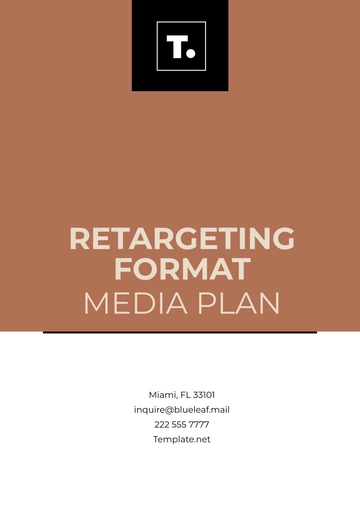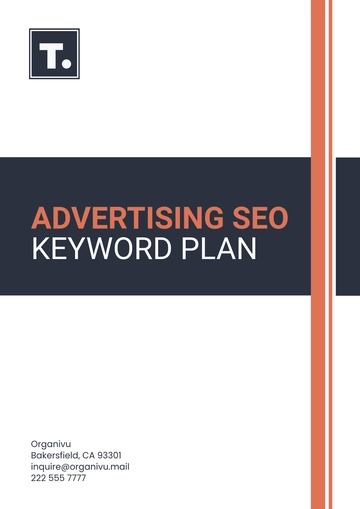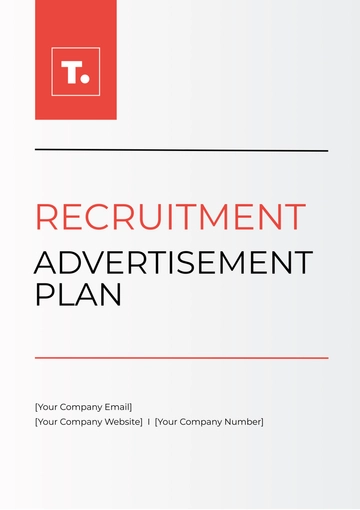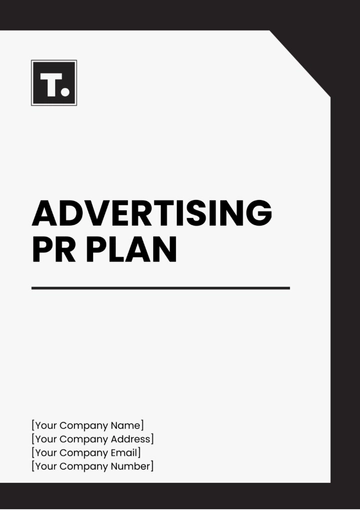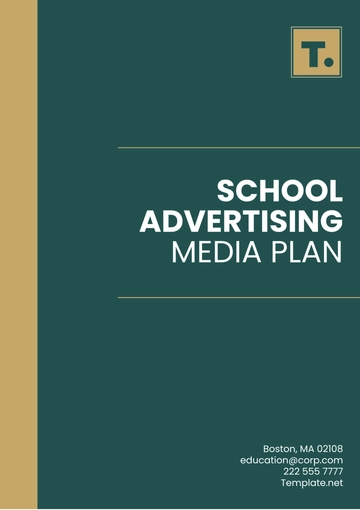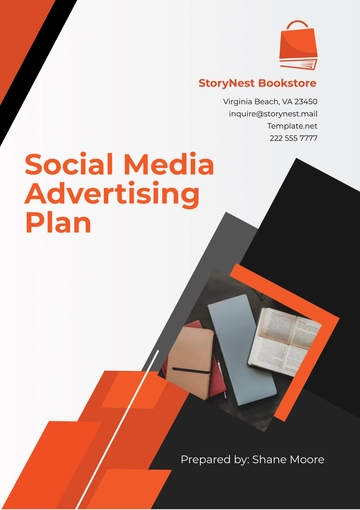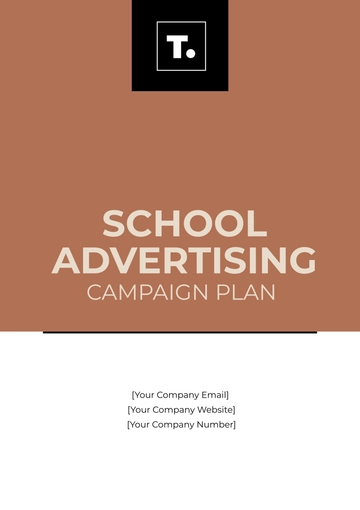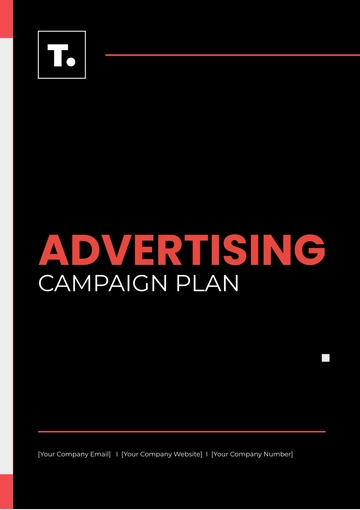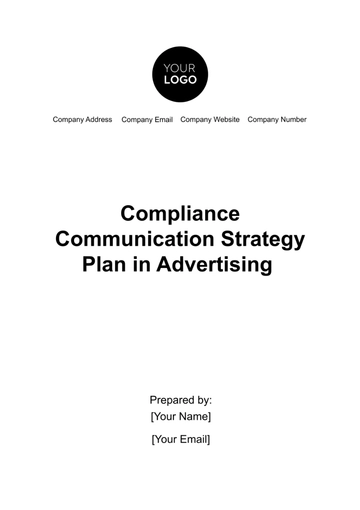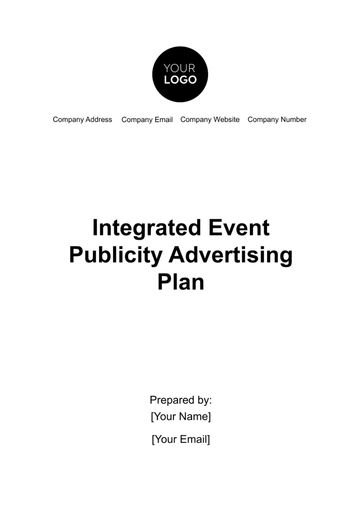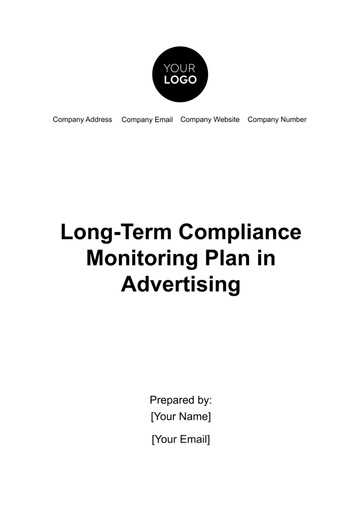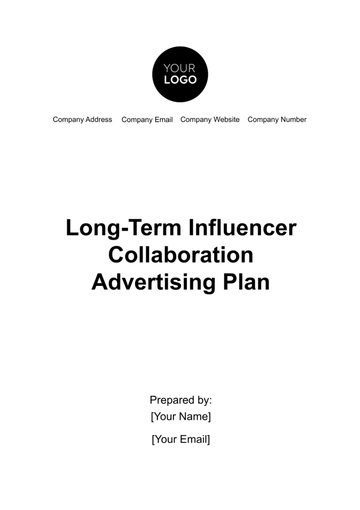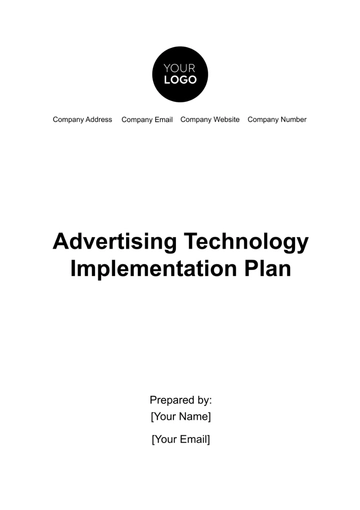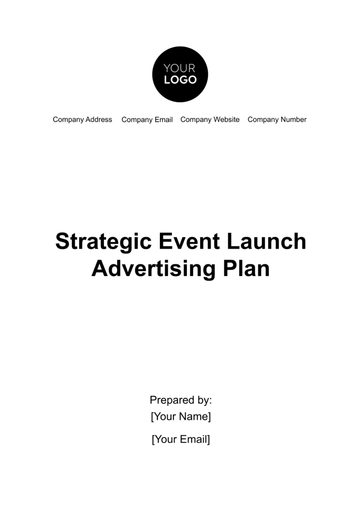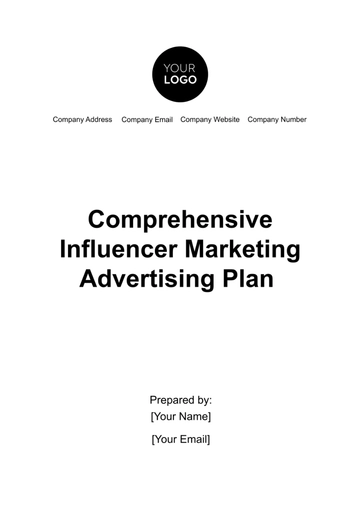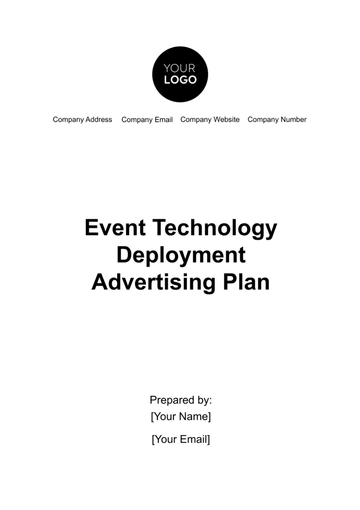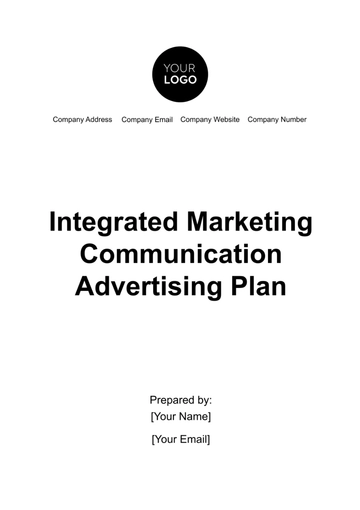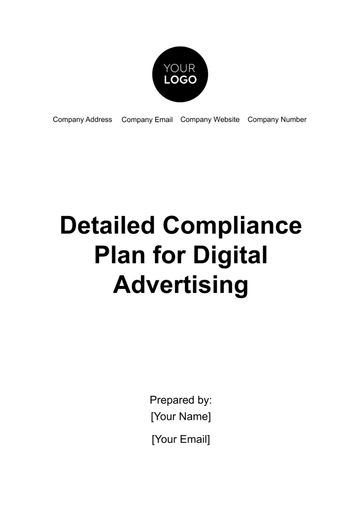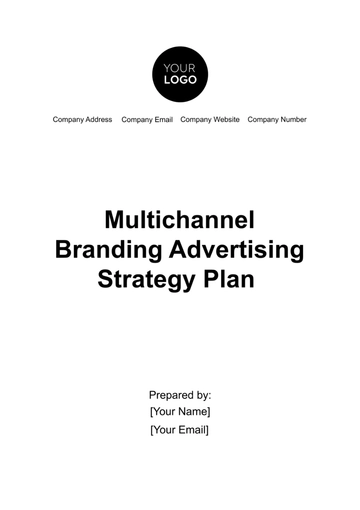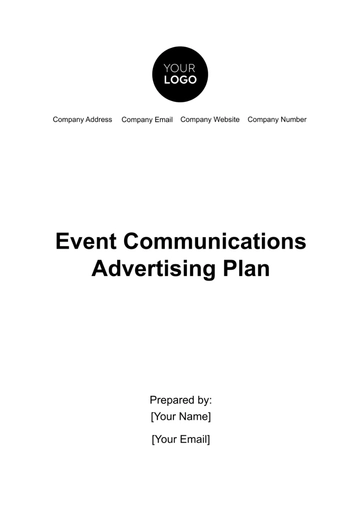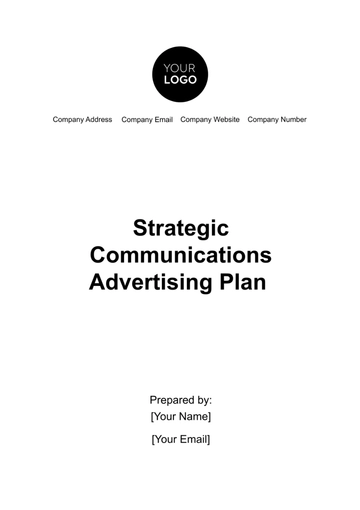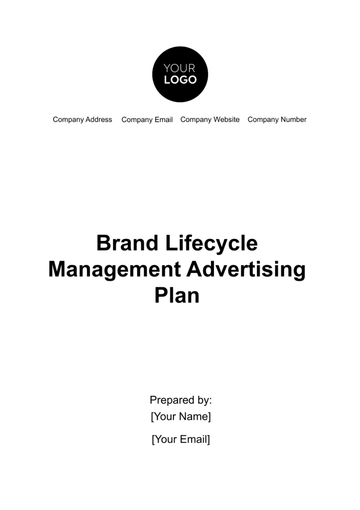Free Advertising Media Plan Brief
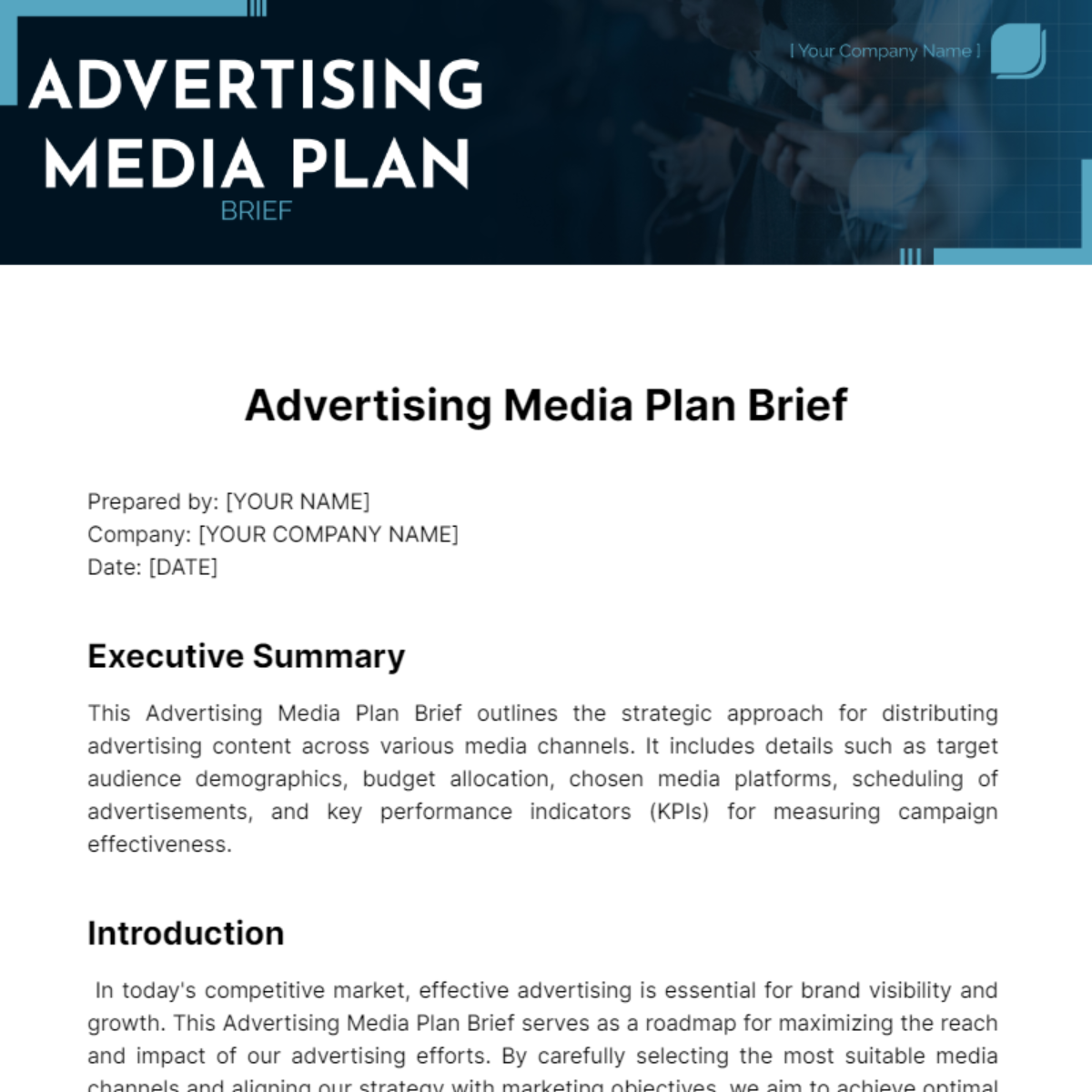
Prepared by: [YOUR NAME]
Company: [YOUR COMPANY NAME]
Date: [DATE]
Executive Summary
This Advertising Media Plan Brief outlines the strategic approach for distributing advertising content across various media channels. It includes details such as target audience demographics, budget allocation, chosen media platforms, scheduling of advertisements, and key performance indicators (KPIs) for measuring campaign effectiveness.
Introduction
In today's competitive market, effective advertising is essential for brand visibility and growth. This Advertising Media Plan Brief serves as a roadmap for maximizing the reach and impact of our advertising efforts. By carefully selecting the most suitable media channels and aligning our strategy with marketing objectives, we aim to achieve optimal results.
Budget Allocation
Our allocated budget for this advertising campaign is $500,000. The breakdown across various media channels is as follows:
Media Channel | Budget Allocation | Description |
|---|---|---|
Television | $150,000 | Prime-time slots targeting broad audience demographics |
Digital Advertising | $200,000 | Social media, display ads, SEM, and video advertising |
Print Media | $50,000 | Newspapers and magazines with high target readership |
Radio | $30,000 | Local and regional stations with peak listening times |
Out-of-Home (OOH) | $40,000 | Billboards and transit ads in high-traffic locations |
Online Video Streaming | $20,000 | Ads on popular streaming platforms like YouTube |
Influencer Partnerships | $10,000 | Collaborations with relevant influencers on social media |
Alignment with Marketing Objectives
The advertising campaign's objectives are closely aligned with the broader marketing goals of the company. These objectives include increasing brand awareness, driving customer engagement, and ultimately boosting sales. By targeting the right audience through strategic media placement, we aim to achieve these objectives efficiently and effectively.
Increasing Brand Awareness: Our primary goal is to enhance brand visibility and recognition among our target audience. To achieve this objective, we will focus on selecting media channels with a wide reach and high visibility, ensuring that our advertising messages are seen by as many potential customers as possible. Additionally, our creative content will emphasize our brand's unique value propositions and key messaging to leave a lasting impression on viewers.
Driving Customer Engagement: Engaging our audience is crucial for building meaningful relationships and fostering loyalty. Our advertising campaign will incorporate interactive elements and calls to action across various media channels to encourage audience participation and feedback. We will also leverage social media platforms to facilitate two-way communication and create opportunities for user-generated content, further strengthening our brand-consumer relationships.
Boosting Sales: Ultimately, the success of our advertising campaign will be measured by its impact on sales performance. To drive sales, we will implement strategies to influence consumer behavior and drive purchase intent. This may include promotional offers, discounts, and exclusive deals featured in our advertising content. By tracking conversion metrics and analyzing sales data, we will assess the campaign's effectiveness in driving tangible business results and generating a positive return on investment (ROI).
Creative Context and Requirements
Creative content plays a crucial role in capturing the audience's attention and conveying our brand message effectively. Our advertising strategy will incorporate visually appealing and engaging content tailored to each media channel's specifications. Regular updates and modifications to creative assets will ensure relevance and effectiveness throughout the campaign.
Visual Appeal and Brand Consistency:
All creative content must reflect the brand's identity and maintain consistency across all media channels. Visual elements such as logos, color schemes, and typography should align with the brand guidelines to reinforce brand recognition and loyalty.
Tailored Content for Each Media Channel
Creative assets will be customized to suit the unique characteristics and audience preferences of each media channel. For example:
Social Media: Short, attention-grabbing videos, captivating images, and concise copy tailored to the platform's format and audience demographics.
Television: High-quality video commercials with compelling storytelling and clear calls-to-action, optimized for various screen sizes and resolutions.
Print Media: Visually striking print ads with concise messaging and captivating imagery, designed to stand out in print publications and outdoor displays.
Interactive and Engaging Elements
Incorporating interactive elements such as polls, quizzes, and user-generated content can enhance audience engagement and foster a sense of participation. Interactive content will be strategically integrated into digital platforms to encourage interaction and sharing.
Adaptability and Agility
Creative assets will be designed with flexibility in mind to accommodate any unforeseen changes or opportunities during the campaign. Quick turnaround times for updates and modifications will ensure agility in responding to evolving market trends and consumer behaviors.
Localization and Personalization
Where applicable, creative content will be localized to resonate with specific regional or cultural nuances. Personalization techniques, such as dynamic content insertion and targeted messaging, will be utilized to enhance relevance and connect with individual audience members on a more personalized level.
Testing and Optimization
A/B testing and other optimization techniques will be employed to fine-tune creative elements and maximize their effectiveness. By analyzing performance metrics and audience feedback, we will identify the most engaging content variations and iterate accordingly to optimize campaign results.
Compliance and Ethical Considerations
All creative content will adhere to ethical standards and legal regulations, including copyright laws, data privacy regulations, and industry-specific guidelines. Prior approval from relevant stakeholders will be obtained to ensure compliance with brand standards and avoid any potential reputational risks.
Stakeholder Communication
Clear and consistent communication with stakeholders is vital for the success of any advertising campaign. Regular progress updates, performance reports, and feedback sessions will be conducted to keep all stakeholders informed and engaged throughout the campaign duration. Open lines of communication will foster collaboration and alignment toward shared goals.
Stakeholder Identification:
We have identified key stakeholders involved in the advertising campaign, including the brand manager, marketing team, creative team, media buying agency, and senior management.
Communication Channels:
Regular communication will be facilitated through various channels, including email updates, scheduled meetings, and collaborative project management platforms such as Slack or Microsoft Teams.
Progress Updates:
Weekly progress updates will be sent to stakeholders outlining the status of the campaign, including milestones achieved, challenges encountered, and upcoming tasks. These updates will ensure transparency and provide stakeholders with a clear understanding of the campaign's progress.
Performance Reports:
Monthly performance reports will be shared with stakeholders, providing detailed insights into key performance indicators (KPIs) such as reach, engagement, conversion rates, and ROI. These reports will enable stakeholders to assess the effectiveness of the campaign and make informed decisions about adjustments or optimizations.
Feedback Sessions:
Bi-weekly feedback sessions will be scheduled to gather input from stakeholders regarding campaign performance, creative content, and overall strategy. These sessions will provide an opportunity for stakeholders to share their perspectives, identify areas for improvement, and collaborate on solutions.
Ad Hoc Communication:
In addition to scheduled updates and feedback sessions, stakeholders will have access to ad hoc communication channels for addressing urgent issues, seeking clarification, or sharing timely updates.
Collaborative Approach:
Open lines of communication will be maintained to foster collaboration and alignment toward shared goals. Stakeholders will be encouraged to actively participate in discussions, contribute ideas, and provide feedback to ensure the success of the campaign.
Responsibility Assignment:
Clear roles and responsibilities will be defined for each stakeholder to ensure accountability and streamline communication. A designated point of contact will be identified for addressing specific inquiries or concerns related to the campaign.
Feedback Integration:
Feedback received from stakeholders will be carefully considered and integrated into the campaign strategy and execution plan as appropriate. Continuous improvement based on stakeholder input will be prioritized to optimize campaign performance and maximize results.
Monitoring Evaluation
KPIs | Measure | Monitoring Procedure |
|---|---|---|
Reach | Total number of unique impressions or views across all advertising channels | Regular tracking of impressions and reach using analytics tools provided by each media platform. Weekly reports for assessment. |
Engagement | Interaction metrics such as likes, shares, comments, and CTR | Continuous monitoring of engagement metrics through analytics platforms and social media management tools. Daily assessment. |
Conversion Rates | Percentage of users who take desired actions after interacting with ads | Implementation of conversion tracking across digital channels. Regular analysis to evaluate effectiveness and identify optimization. |
Return on Investment (ROI) | The ratio of the campaign's net profit to the overall cost, expressed as a percentage | Comprehensive ROI analysis comparing campaign expenses to generated revenue. Monthly reports to assess performance and inform adjustments. |
Ad Placement Performance | Effectiveness of different ad placements and formats | A/B testing and multivariate analysis to evaluate performance. Insights inform ongoing optimization efforts to maximize ad performance. |
Brand Awareness | Surveys, focus groups, sentiment analysis | Regular surveys, and sentiment analysis before, during, and after the campaign. Insights guide adjustments to messaging and creative content. |
Legal and Compliance Considerations
This table summarizes the key legal and compliance considerations for the advertising campaign, including adherence to advertising standards, consumer protection laws, data protection and privacy regulations, copyright, and intellectual property rights, endorsements and testimonials guidelines, and regulatory compliance monitoring.
Consideration | Details |
|---|---|
Advertising Standards | Adherence to industry standards and guidelines set by regulatory bodies like ASA or FTC. |
Ensuring all claims are truthful, accurate, and substantiated with evidence. | |
Consumer Protection Laws | Compliance with laws like the FTC Act or Consumer Protection Act, refraining from deceptive practices. |
Providing clear and transparent information to consumers. | |
Data Protection and Privacy | Complying with GDPR, CCPA, or other data protection laws. |
Obtaining necessary consent for data processing activities and ensuring data security. | |
Copyright and Intellectual Property Rights | Ensuring originality or proper licensing of content to avoid infringement. |
Obtaining permissions or licenses for third-party content usage. | |
Endorsements and Testimonials | Compliance with FTC's Endorsement Guides. |
Disclosing material connections between endorsers and advertised products/services. | |
Regulatory Compliance Monitoring | Regular audits to ensure ongoing compliance. |
Conclusion
In conclusion, this Advertising Media Plan Brief provides a comprehensive overview of our strategic approach to distributing advertising content across various media channels. By aligning our efforts with marketing objectives, leveraging creative content, fostering stakeholder communication, and monitoring campaign performance, we are confident in achieving our desired outcomes and driving success for the brand.
- 100% Customizable, free editor
- Access 1 Million+ Templates, photo’s & graphics
- Download or share as a template
- Click and replace photos, graphics, text, backgrounds
- Resize, crop, AI write & more
- Access advanced editor
Unlock your brand's potential with Template.net's Advertising Media Plan Brief Template. This editable and customizable tool streamlines your campaign strategy, ensuring precision in every detail. Crafted to perfection, it's seamlessly editable in our Ai Editor Tool, empowering you to tailor your media plan effortlessly. Elevate your advertising game with this comprehensive solution.
You may also like
- Finance Plan
- Construction Plan
- Sales Plan
- Development Plan
- Career Plan
- Budget Plan
- HR Plan
- Education Plan
- Transition Plan
- Work Plan
- Training Plan
- Communication Plan
- Operation Plan
- Health And Safety Plan
- Strategy Plan
- Professional Development Plan
- Advertising Plan
- Risk Management Plan
- Restaurant Plan
- School Plan
- Nursing Home Patient Care Plan
- Nursing Care Plan
- Plan Event
- Startup Plan
- Social Media Plan
- Staffing Plan
- Annual Plan
- Content Plan
- Payment Plan
- Implementation Plan
- Hotel Plan
- Workout Plan
- Accounting Plan
- Campaign Plan
- Essay Plan
- 30 60 90 Day Plan
- Research Plan
- Recruitment Plan
- 90 Day Plan
- Quarterly Plan
- Emergency Plan
- 5 Year Plan
- Gym Plan
- Personal Plan
- IT and Software Plan
- Treatment Plan
- Real Estate Plan
- Law Firm Plan
- Healthcare Plan
- Improvement Plan
- Media Plan
- 5 Year Business Plan
- Learning Plan
- Marketing Campaign Plan
- Travel Agency Plan
- Cleaning Services Plan
- Interior Design Plan
- Performance Plan
- PR Plan
- Birth Plan
- Life Plan
- SEO Plan
- Disaster Recovery Plan
- Continuity Plan
- Launch Plan
- Legal Plan
- Behavior Plan
- Performance Improvement Plan
- Salon Plan
- Security Plan
- Security Management Plan
- Employee Development Plan
- Quality Plan
- Service Improvement Plan
- Growth Plan
- Incident Response Plan
- Basketball Plan
- Emergency Action Plan
- Product Launch Plan
- Spa Plan
- Employee Training Plan
- Data Analysis Plan
- Employee Action Plan
- Territory Plan
- Audit Plan
- Classroom Plan
- Activity Plan
- Parenting Plan
- Care Plan
- Project Execution Plan
- Exercise Plan
- Internship Plan
- Software Development Plan
- Continuous Improvement Plan
- Leave Plan
- 90 Day Sales Plan
- Advertising Agency Plan
- Employee Transition Plan
- Smart Action Plan
- Workplace Safety Plan
- Behavior Change Plan
- Contingency Plan
- Continuity of Operations Plan
- Health Plan
- Quality Control Plan
- Self Plan
- Sports Development Plan
- Change Management Plan
- Ecommerce Plan
- Personal Financial Plan
- Process Improvement Plan
- 30-60-90 Day Sales Plan
- Crisis Management Plan
- Engagement Plan
- Execution Plan
- Pandemic Plan
- Quality Assurance Plan
- Service Continuity Plan
- Agile Project Plan
- Fundraising Plan
- Job Transition Plan
- Asset Maintenance Plan
- Maintenance Plan
- Software Test Plan
- Staff Training and Development Plan
- 3 Year Plan
- Brand Activation Plan
- Release Plan
- Resource Plan
- Risk Mitigation Plan
- Teacher Plan
- 30 60 90 Day Plan for New Manager
- Food Safety Plan
- Food Truck Plan
- Hiring Plan
- Quality Management Plan
- Wellness Plan
- Behavior Intervention Plan
- Bonus Plan
- Investment Plan
- Maternity Leave Plan
- Pandemic Response Plan
- Succession Planning
- Coaching Plan
- Configuration Management Plan
- Remote Work Plan
- Self Care Plan
- Teaching Plan
- 100-Day Plan
- HACCP Plan
- Student Plan
- Sustainability Plan
- 30 60 90 Day Plan for Interview
- Access Plan
- Site Specific Safety Plan

